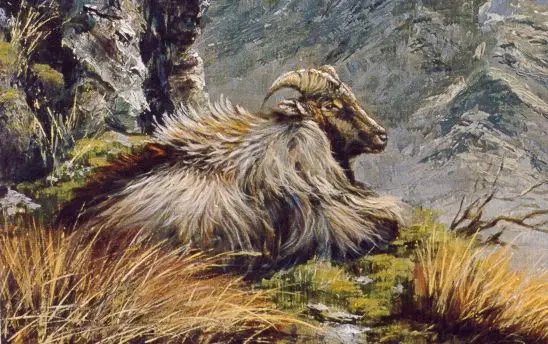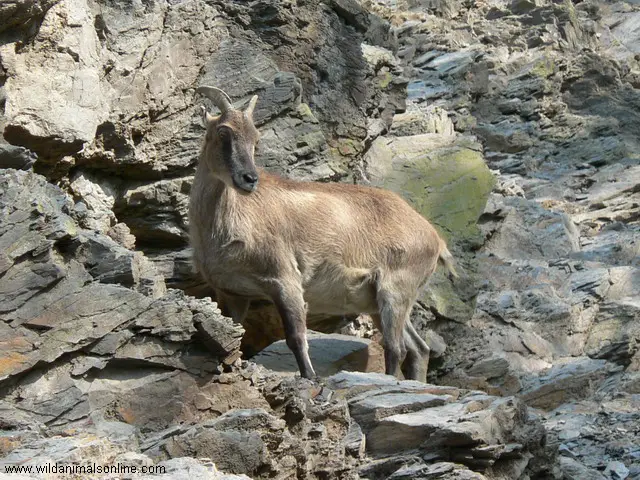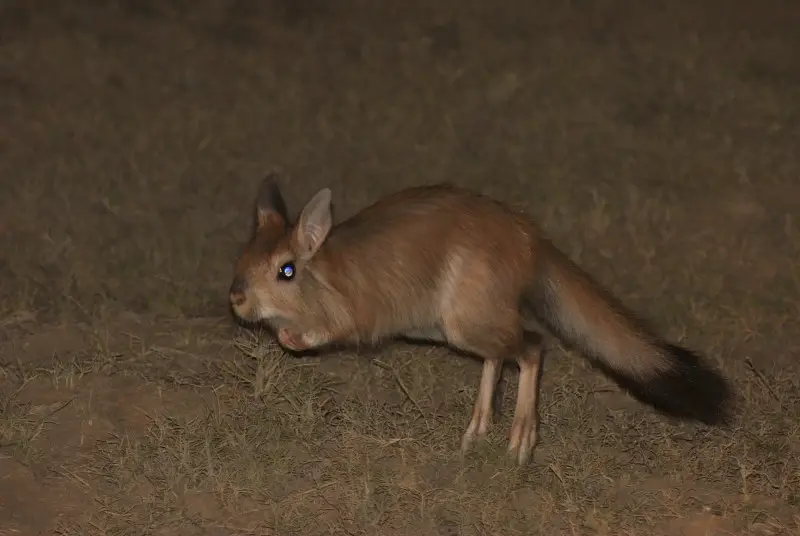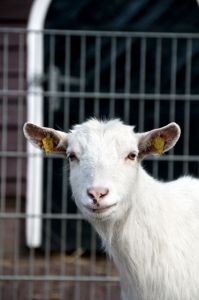Himalayan Tahr
The Himalayan Tahr looks like a cross between a sheep and a goat. The steep hill-sides and edges of the abyss are no obstacles for this agile mountain animal. The history of these animals stretches back far into history, as wall paintings inside caves in France show that up to the last ice age the Tahrs inhabited European territories, while now there are only populations in the Himalayan mountains, as well as New Zealand and South Africa where they were brought by colonists.
Male Tahrs are impressive with their long, black or reddish brown wool and a bushy mane that hangs down from the neck and shoulders down to their forefeet. The females are about 25% smaller, with a less stocky build and a shorter fur. Both the males and the females have a pair of horns, while the female’s are much smaller. Their legs are equipped with hard nails and soft pillows to ease movement in the steep mountain areas.
The natural habitat of Himalayan Tahrs are the Himalayan mountains, where they live in altitudes of more than 2500 metres above sea level. In 1904 they were also introduced to New Zealand, where the conditions proved favorable and they quickly established a strong population in the wild. Later, a few specimen escaped a zoo in South Africa and started inhabiting hill sides in the South African Republic.
Himalayan Tahrs live in small groups, rarely exceeding 10 individuals. They wander the mountains in search for food, and if a rich pasture is found, multiple days are spent grazing there. These animals can easily access grass on even the steepest slopes, thus they don’t have much competitors for food. In their original range of distribution, the Himalayan Tahrs also don’t have any natural predators, thus they live relatively peaceful lives.
Thy feed mostly off grass and bush leaves. The feeding time is at dawn and later when the sun is about to set. The group starts at one place and moves up the mountain side. After resting until afternoon on a narrow cliff spike, and then start feeding again. In winter, they become less active and time for feeding narrows down from 8 hours to six, and they spend more time resting.
The Tahrs that live in the Himalayas mate October through January, while the populations in South Africa and New Zealand – from May to July. The males fight for the sympathies of the females, but these fights are rarely violent. The male also displays his mane and baas, trying to make a good impression. After a gestation period of six months, a single calf is born. The young Tahr can walk in 2 hours already, but the mother nurses it until the age of 2 years old, although the young may stay in the same group for a few more years. In the wild, Himalayan Tahrs live for up to 15 years.




